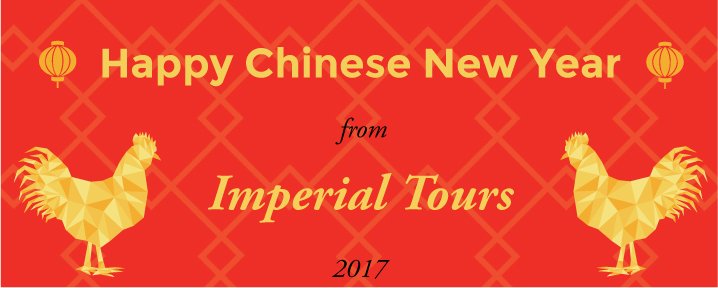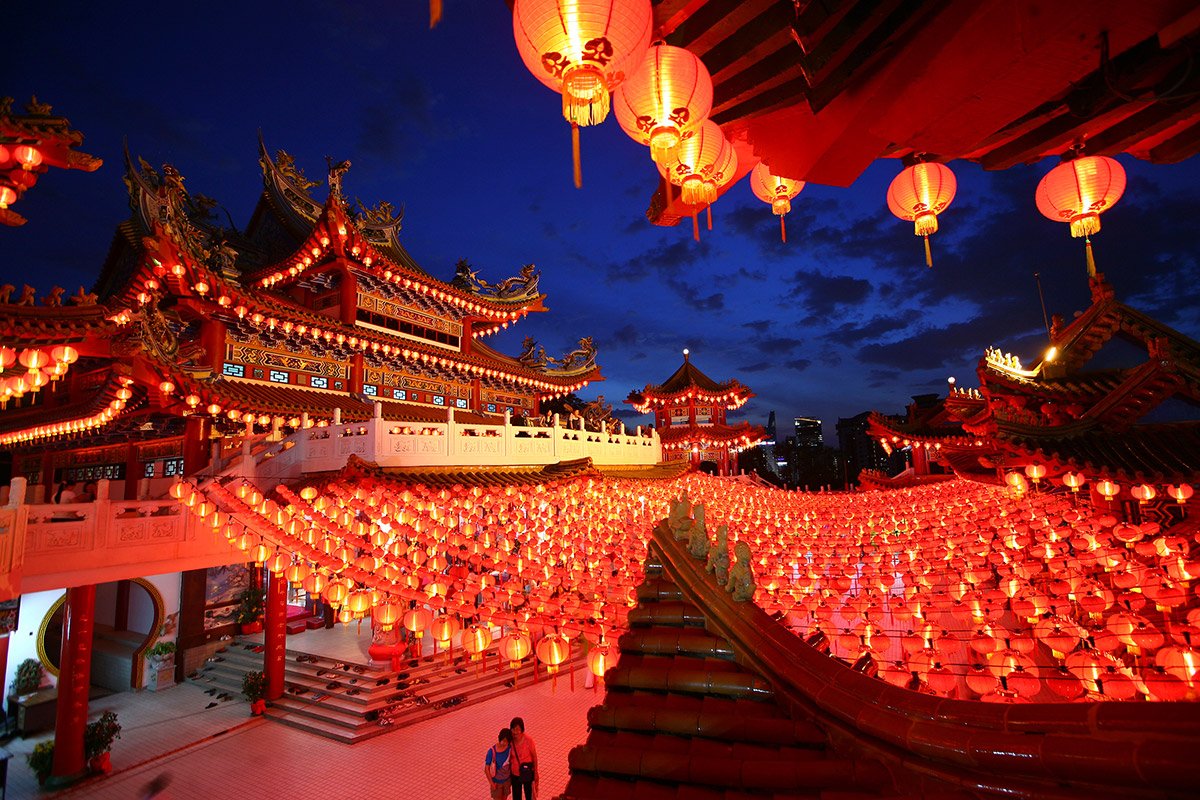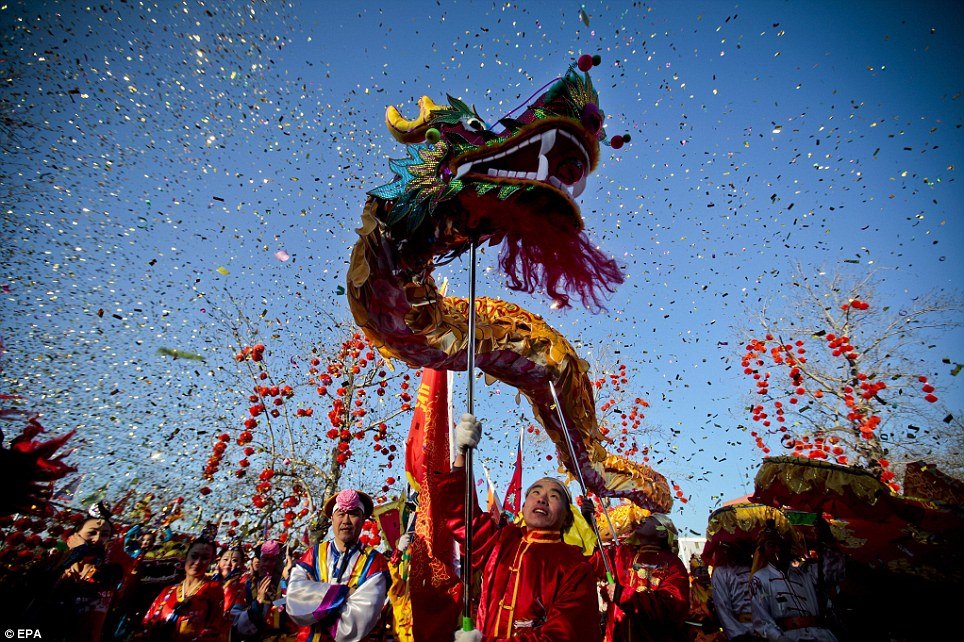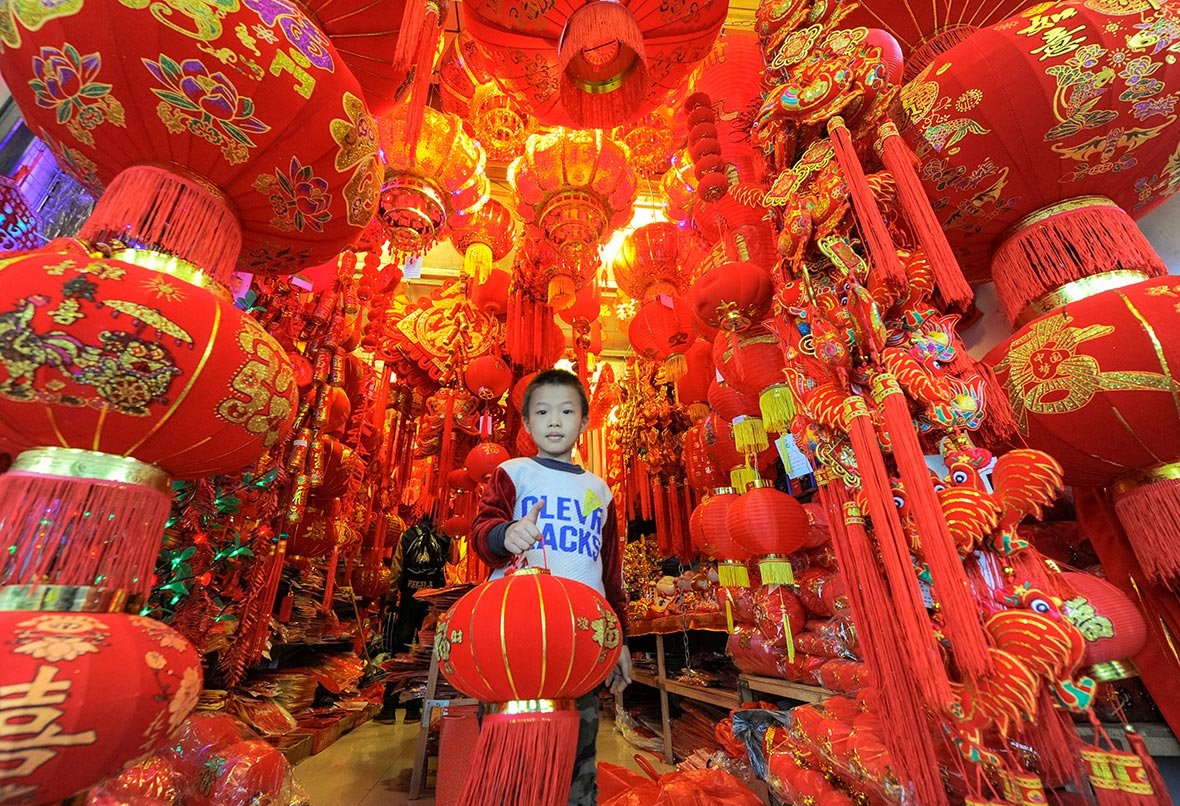
The Year of the Rooster
Chinese New Year, also referred to as Lunar New Year and Spring Festival, is the biggest and most important holiday in China. In terms of significance in Chinese culture the Lunar New Year is comparable to combining Thanksgiving and Christmas together. We have assembled some traditions and facts behind one of the world’s largest celebrations to provide a better understanding of this holiday. We have also put together some useful travel tips should you wish to experience this festival first hand.
The tradition of Chinese New Year is said to have started thousands of years ago when, at the end of a cold and hard winter, a mythical beast called Nian would storm into Chinese villages and devour all the men, women and children residing there. Full of fear and with no means to defend themselves the villagers would hide in the surrounding bamboo forests to wait out the night and the wrath of the beast. Until one year, tired of hiding, a brave old man decided to face the beast alone. In preparation for his fateful encounter, the old man hung up red flags and banners; he then cut fresh bamboo to light a fire. Once on fire the green bamboo created such loud cracking sounds that the monster, upon hearing the noise and seeing the many red colors, was scared away. And so as legend goes, from that day on people no longer had to fear the beast. Advancing forward thousands of years, it is now tradition that at the end of winter people across China gather together to celebrate, hang red banners and lanterns, wear red clothing and light firecrackers.

Red Lanterns in Beijing at Chinese New Year/span>
Chinese New Year is a 15-day celebration following the lunar calendar, this means that the date of the holiday changes each year. Generally, Chinese New Year falls between the end of January and the beginning of February. In 2017, January 28th was the first day of the New Year, marking the beginning of the year of the Rooster. Outside China countries such as Indonesia, Malaysia, South Korea, Taiwan and Singapore also recognize and celebrate the festival. Chinese New Year is actually the biggest migration on earth. Over the holiday there are an estimated 650 million people traveling, either throughout China or overseas to visit friends and family. Much like Christmas and Thanksgiving, in Chinese culture over the Lunar New Year it is customary for families to spend time together. For those individuals who have have moved into bigger centers, such as Beijing or Shanghai for work or study, the New Year festival is a time to travel home. For many people, this is the only time of year when they will have time to reunite with their families. Officially, this mass migration begins two weeks before New Years Eve and ends two weeks after; this transport period is referred to as Chun Yun. The Chinese New Year festival is also responsible for the largest television broadcast in the world. Since 1983, CCTV (China Central Television broadcasting company) has hosted a lavish six-hour Spring Festival Gala. The gala is called Chun Wan and is essentially a variety show featuring traditional Chinese performances showcasing China’s vast culture and history. With approximately 800 million viewers, this is the largest entertainment show broadcast globally. Since its origin, Chinese New Year has evolved to incorporate new customs and traditions, which can vary from place to place and family to family. However there are some universal traditions that the majority of those celebrating Chinese New Year recognize. We have created a list of seven common customs followed during the New Year festival.

Traditional Chinese New Year Customs
Spring-Cleaning
Several days before the Lunar New Year is set to commence it is customary to perform a spring-cleaning of your home to sweep any ill fortune away. This is also the time to stock up on snacks and food to prepare for the festivities, much like what happens in the days prior to Christmas. This preparation is important as during Chinese New Year it is believed that one should do as little work as possible. It is also considered bad luck to use a knife, light a fire or even use a broom on the first day of the New Lunar Year.
Traditional Red Clothing & Decorations
In line with tradition, at Chinese New Year it is customary to decorate your home with traditional red lanterns and red banners. Across China red banners with auspicious poems written on them are hung outside doors to bring good fortune, wealth, happiness and longevity. In ancient China, New Year was also typically the time when people bought or traded for new clothing. In present-day China, it is customary to buy and wear red clothing, even underwear during this period.
Family Gatherings
It is traditional on New Years Eve for the family to congregate at the husband’s family home, then, on the second day of the New Year, the family would go to their maternal relatives for a visit and celebration. However, during the Lunar Festival the theme is generally ‘the more the merrier’ and generally distant relatives will gather together to celebrate regardless of family ties.
Lucky Foods
Symbolism in China is of utmost importance; even the food that is served and consumed during the New Year festival holds significance. Traditionally, fish is eaten for the New Year’s meal. In Chinese the word fish (yú) sounds similar to the Chinese word for ‘surplus’. Fish is consumed to ensure that each year there will be surplus. However, the fish is never eaten completely as this again symbolizes surplus. Other ‘lucky’ foods include mandarin oranges (júzi) as their name is a homophone of the word for success in Chinese. Another popular food with homophonic meaning is Niangao or glutinous rice cake, which sounds like ‘a more prosperous year’. Additionally, spring rolls and dumplings are eaten because of their similarities to ancient Chinese silver and gold ingots.
Firework Displays
In line with the tradition to scare away the Nian, at midnight on New Years Eve, to ring in the New Year people all over China go outside to set off a barrage of firecrackers and fireworks. However, this practice is not restricted to New Years Eve alone, every night for the next two weeks fireworks are lit until the last day of the festivities when anything that is left is set off.
Temple Visits & Temple Fairs
After the festivities and fireworks the night before, on the morning of New Years Day people congregate at Buddhist temples to give their offerings to the gods. While not everyone in China practices Buddhism, many Buddhist traditions have intermixed with folk customs and it is customary to burn incense at the temples as well as make a donation to wish for a smooth and successful next year. This is often combined with a visit to a traditional temple fair.
Traditional Gifts The five days following New Year’s Day are dedicated to eating, drinking, visiting relatives and playing mahjong. During this time it is traditional for older relatives to give children gifts of red envelopes with money called Hong Bao. The values vary from family to family, but typically Hong Bao’s consist of monetary values containing lucky numbers such as 6, 8 or 9. With the advancement of technology it has now also become popular for friends and family to send each other Hong Bao’s over the messaging service Wechat.

Traveling During the Chinese New Year Festival
Because most businesses are closed for the holiday, we do no recommend traveling during the first week of Chinese New Year. However, in the second week business starts to picks up again, as people return from their holidays the hustle and bustle of modern China slowly returns. If you do wish to come during this period there are some fun and cultural experiences we recommend doing.
Attend a Temple Fair
Visiting a Chinese New Year Temple Fair, called a Miao Hui, is a great way to experience Chinese culture around the Spring Festival. These temple fairs are set up in large city parks and feature arts and crafts as well as traditional performances. Many temple fairs have evolved into bazaar-like events with parts of the park dedicated to arcades where one can try one’s luck at winning an oversized teddy bear and various other prizes. These fairs are also great for trying a multitude of traditional Chinese snacks that are often only available during Chinese New Year.
Fireworks
Over 2,000 years ago China invented fireworks, so it is no surprise that watching and lighting fireworks during the New Year festival can be quite inspirational. On every large street corner temporary shops set up selling boxes of fireworks of various types. During the festival you can expect to see firework displays every evening. In recent years the government has tried to discourage citizens from lighting fireworks in the city due to fire hazards, but this rule goes largely ignored and is often not enforced.
Chinese Zodiac Animals
|
|
Characteristics |
Years |
|
Rat |
Intelligent, adaptable, quick-witted, charming, artistic & sociable. |
2020, 2008, 1996, 1984, 1972, 1960, 1948 & 1936 |
|
Ox |
Loyal, reliable, thorough, strong, reasonable, steady & determined. |
2021, 2009, 1997, 1985, 1973, 1961, 1949 & 1937 |
|
Tiger |
Enthusiastic, courageous, ambitious, leadership, confidence & charismatic. |
2022, 2010, 1998, 1986, 1974, 1962, 1950 & 1938 |
|
Rabbit |
Trustworthy, empathic, modest, diplomatic, sincere, sociable & caretakers. |
2023, 2011, 1999, 1987, 1975, 1963, 1951 & 1939 |
|
Dragon |
Lucky, flexible, eccentric, imaginative, artistic, spiritual & charismatic. |
2024, 2012, 2000, 1988, 1976, 1964, 1952 & 1940 |
|
Snake |
Philosophical, organised, intelligent, intuitive, elegant, attentive & decisive. |
2025, 2013, 2001, 1989, 1977, 1965, 1953 & 1941 |
|
Horse |
Adaptable, loyal, courageous, ambitious, intelligent, adventurous & strong. |
2026, 2014, 2002, 1990, 1978, 1966, 1954 & 1942 |
|
Sheep |
Tasteful, crafty, warm, elegant, charming, intuitive, sensitive & calm. |
2027, 2015, 2003, 1991, 1979, 1967, 1955 & 1943 |
|
Monkey |
Quick-witted, charming, lucky, adaptable, bright, versatile, lively & smart. |
2028, 2016, 2004, 1992, 1980, 1968, 1956 & 1944 |
|
Rooster |
Honest, energetic, intelligent, flamboyant, flexible, diverse & confident. |
2029, 2017, 2005, 1993, 1981, 1969, 1957 & 1945 |
|
Dog |
Loyal, sociable, courageous, diligent, steady, lively, adaptable & smart. |
2030, 2018, 2006, 1994, 1982, 1970, 1958 & 1946 |
|
Pig |
Honorable, philanthropic, determined, optimistic, sincere &sociable. |
2031, 2019, 2007, 1995, 1983, 1971, 1959 &1947 |